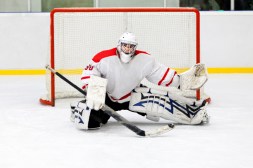Choosing the Right Workout Gear: The Pros and Cons of Compression vs. Loose Fits
When it comes to workout gear, one of the most debated topics among fitness enthusiasts is whether to opt for compression clothing or loose-fitting attire. Each style has its own set of advantages and disadvantages, which can significantly impact your performance during workouts. In this article, we will explore the pros and cons of compression vs. loose fit clothing, helping you make an informed choice that best suits your workout needs.
The Benefits of Compression Clothing
Compression garments are designed to fit snugly against your skin, providing a range of benefits for athletes and casual exercisers alike. One major advantage is improved blood circulation; the tight fit promotes better oxygen delivery to muscles, enhancing endurance and reducing fatigue during intense workouts. Additionally, compression wear can help minimize muscle vibration, which may decrease soreness post-exercise. Many athletes also appreciate how these garments wick away moisture, keeping them dry and comfortable.
The Drawbacks of Compression Gear
Despite its benefits, compression clothing isn’t without its downsides. Some individuals may find the tightness restrictive or uncomfortable during certain movements or exercises. Moreover, if not sized correctly, compression wear can lead to chafing or irritation on sensitive skin areas. It’s also worth noting that while some studies suggest performance enhancements from wearing compression gear, others indicate that the effects vary widely among individuals; what works for one person might not work for another.
Advantages of Loose-Fitting Workout Clothes
Loose-fitting workout clothes offer a different approach altogether—comfort being their primary advantage. They provide ample room for unrestricted movement during physical activities such as yoga or dance classes where flexibility is key. Additionally, loose attire often allows better airflow around the body—helpful in keeping you cool during high-intensity workouts or hot weather conditions. Many people also prefer the relaxed fit for casual outings post-workout.
Challenges with Loose Fit Clothing
While loose-fitting clothes have their perks, they come with some challenges too. For starters, they don’t provide the same level of support as compression garments do; this could be a disadvantage during high-impact exercises where stability is crucial (think running or weightlifting). Loose fabrics can also catch on equipment or get in the way while exercising—potentially distracting you from your performance goal.
Making Your Choice: Factors to Consider
Ultimately, choosing between compression and loose-fit clothing depends on various factors including personal preference, type of activity planned, body type and temperature conditions expected during exercise sessions. If you’re engaging in activities requiring maximum support like running or cycling—as well as experiencing muscle soreness—compression gear could be beneficial for you. On the other hand, if comfort is your priority or if you’re participating in low-impact exercises like Pilates or leisurely walks outside on warm days,
you might find that loose-fitting clothes serve you better.
In conclusion, both compression and loose-fit workout gear have unique advantages tailored to different types of workouts and personal preferences. By carefully assessing what feels best for your body while considering your workout style will guide you toward making an ideal choice between these two popular options.
This text was generated using a large language model, and select text has been reviewed and moderated for purposes such as readability.











